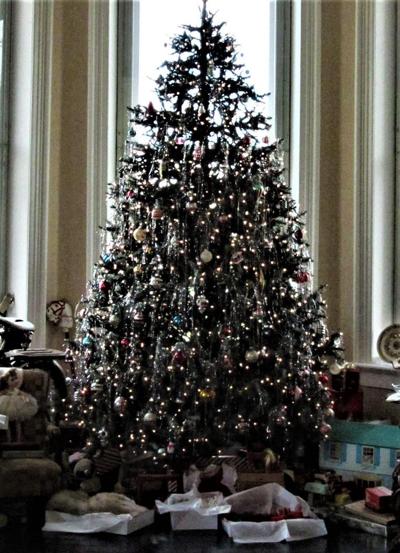Nature News | Marlene A. Condon December 4, 2021

The glittering tinsel that we call “icicles” was first made and sold in Nuremberg, Germany, in 1878. Thin strips of silver foil were designed to “drip” like icicles from decorated Christmas trees. Americans immediately fell in love with this novelty, which was still a popular holiday decoration as I was growing up. Herewith a fanciful tale I came across years ago of how tinsel came to be.
Long ago, a German mother was busily cleaning her home for Christmas. The spiders in the house fled upstairs to the attic to escape her broom. When the house became quiet, they slowly crept downstairs for a peek.
Oh! What a beautiful tree they saw! In their excitement they scurried up the trunk of the tree and out along each branch. They were filled with happiness as they climbed amongst the glittering beauty. But alas! By the time they were through climbing, the tree was completely shrouded in their dusty gray spider webbing.
When Santa Claus came with gifts for the children and saw the tree covered with spider webs, he smiled as he saw how happy the spiders were. But Santa knew how heartbroken the mother would be if she saw her wonderfully decorated Christmas tree covered with dusty webs. So, Santa turned the webs into silver and gold.
The tree sparkled and shimmered and was even more beautiful than before. And that is why we have tinsel on our tree, and every tree should have a Christmas spider in its branches.
Spiders are not actually responsible for Christmas tinsel, but a group of these arachnids are referred to as “cobweb spiders,” or “orb weavers.” They are responsible for most of the webs that we see in our gardens and homes.
A cobweb spider is one of the few kinds of animals that builds a trap to catch its prey. The spider starts by making a framework of strong non-sticky threads that it firmly attaches to surrounding plants or other structures, such as might be found in your house.
The spider adds spokes that radiate from the center of the framework; at this stage the web looks much like a bicycle wheel, but it’s not necessarily round. Then the spider spins a sticky spiral of thread that it attaches to each “spoke” as it circles around in widening arcs from the center of the web. This spiral contains the strands of silk that will catch a meal for the spider to eat, and even the spider itself if it doesn’t avoid those sticky spirals.
Webs last long enough to get dusty inside houses because the silk is coated with a layer of antibiotic to ward off bacterial and fungal decay. Cobwebs may appear untidy and embarrass the proud homeowner, but these structures limit the numbers of critters wandering around inside our houses.
Therefore, I hope that the next time that you need to wipe up a dusty cobweb, you won’t think so badly of the spider that made it. Happy holidays, everyone!
